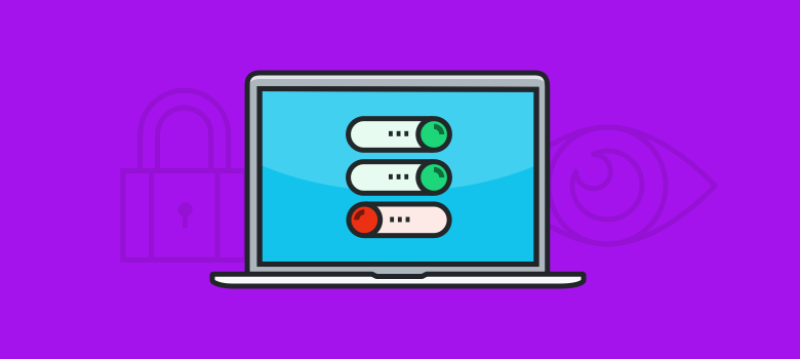
Product
disable-settings-opt-out
With all the recent buzz around Internet privacy and news that ISPs can continue to collect information about Internet users and even sell it, you might be (rightfully) worried about how your information is being collected and used online. There’s been a lot of concern about information being collected unknowingly without user consent, and about something called “implicit opt-in.” Below we’ve explored what implicit opt-in is, and the best way to protect yourself from oftentimes sneaky data collection practices that occur online.
What is Implicit Opt-In?
Implicit opt-in refers to a practice of opting users into something by default – meaning a user is automatically checked “yes” to something by default when they sign up or use a service. In terms of online privacy, implicit opt-in is a practice often implemented to collect data about users. This means that by default, your browser would be set to collect information about your online activity such as the sites you visit, duration of visit, etc. They could then use this information to learn about your behavior, and even sell it to advertisers to profit in the most egregious cases. By using implicit opt-in users automatically “agree” to these practices, although they have not at any point explicitly checked a box to do so. In many cases, users haven’t read the information about their privacy or even become aware of the information being collected since they were opted-in by default.
Turning Off Implicit Opt-In
So what can you do to avoid this practice that’s so invasive to your privacy? The best thing to do is visit the settings or preferences every time you sign up for a new site, provider or service. Read through the settings and ensure you are not agreeing to give up any personal information if you don’t want to. Select what information (if any) you want to share (we recommend sharing nothing!) by unchecking all the boxes possible that consent to data collection. This will protect you from any practices you may have been opted in to by default. It’s a great first step in protecting your privacy.
Other Ways to Protect Your Privacy
Even if you configure your settings, it doesn’t hurt to take measures to additionally protect your privacy. The best way to do so is to use a VPN, like VyprVPN. A VPN encrypts your Internet connection to protect your privacy at all times when browsing or communicating online. When your connection is encrypted, no one can see what you are doing online – not your browser owner, not your ISP, not your application. This means any sites you visit, duration of visit, location and other revealing details are protected from the prying eyes of service providers (for example, Google!) – even if you are unknowingly opted in. Using a VPN is a good safeguard, because the VPN prevents your ISP or others from viewing what you’re doing online. With a VPN, your data and communications are safe no matter what.
Learn more about protecting your privacy with our Internet Privacy Guides

